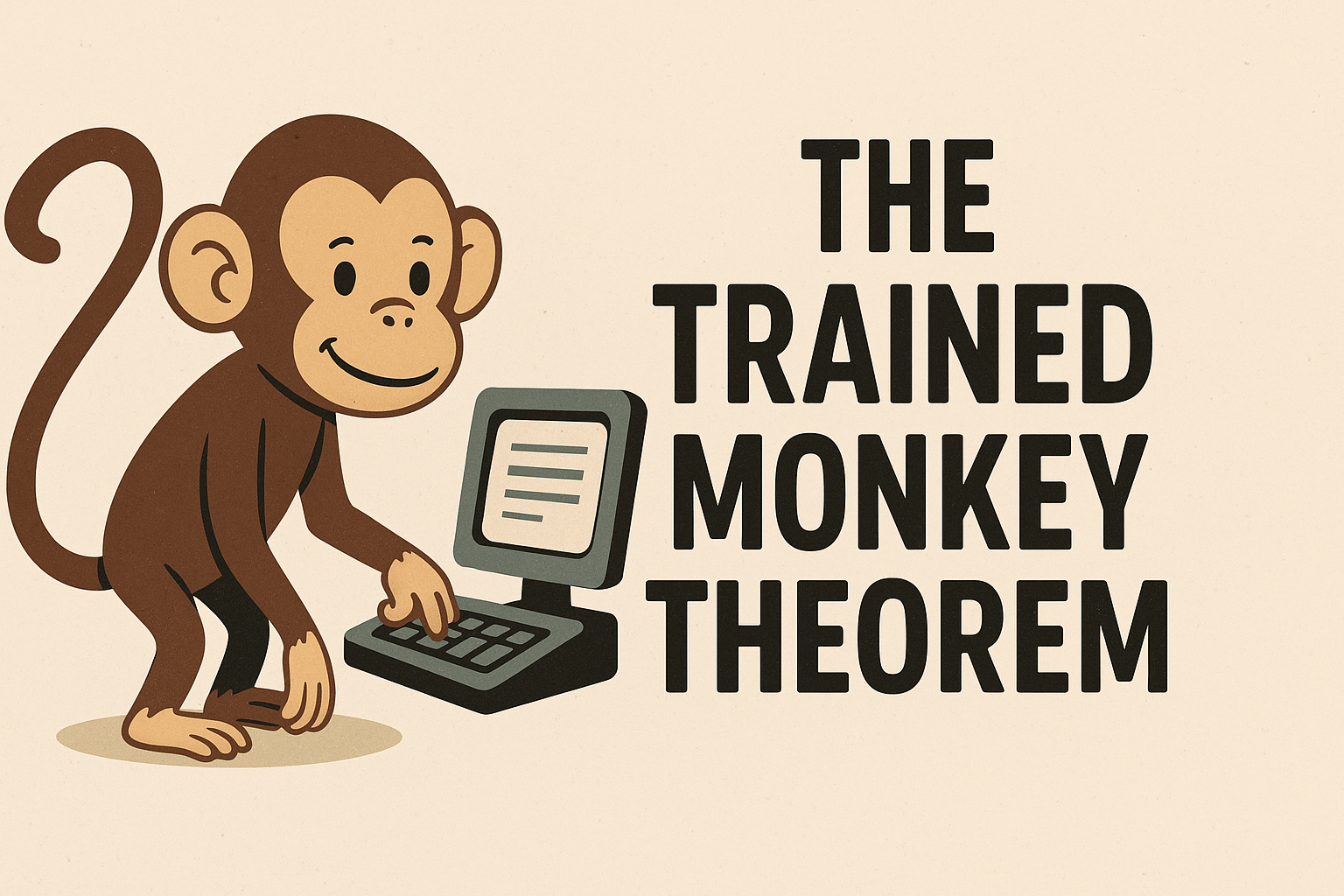The Trained Monkey Theorem: A Modern Take on AI Creativity
Exploring the Trained Monkey Theorem, a new analogy for understanding AI's efficient and guided approach to generating creative outputs, compared to the classic Infinite Monkey Theorem
The Trained Monkey Theorem: A Modern Take on AI Creativity
The Infinite Monkey Theorem has long been a fascinating thought experiment: given infinite time, a monkey (or many monkeys) randomly typing on typewriters would eventually produce the complete works of Shakespeare. It’s a whimsical way to illustrate the power of probability and randomness. But in the age of artificial intelligence (AI), this analogy feels outdated. Enter the Trained Monkey Theorem, a fresh perspective that captures how AI transforms the chaotic typing of monkeys into a disciplined, efficient, and purposeful process.
From Infinite Chaos to Trained Precision
The Infinite Monkey Theorem relies on sheer randomness and infinite time. Picture an army of monkeys hammering away at keyboards, occasionally stumbling upon a coherent word or sentence by chance. It’s a slow, wasteful process, with no direction or intent. AI, however, is different. Imagine instead a small team of trained monkeys, each equipped with years of carefully curated instructions, feedback, and examples. These monkeys don’t type randomly—they’ve learned patterns, structures, and rules, enabling them to produce coherent works, from novels to code, in a fraction of the time.
This is the essence of the Trained Monkey Theorem: AI is like a handful of highly trained monkeys, guided by human data and algorithms, producing meaningful outputs with remarkable efficiency.
Why the Trained Monkey Theorem Fits AI
Modern AI, particularly large language models like those powering chatbots or creative writing tools, operates on principles far removed from random chance. Here’s why the Trained Monkey Theorem is a better analogy:
- Training Over Randomness: AI models are trained on vast datasets—think of them as libraries of human knowledge. This training teaches the “monkeys” to prioritize meaningful sequences, like words, sentences, or even entire narratives, over gibberish.
- Efficiency: While the Infinite Monkey Theorem requires infinite time, AI generates results in seconds. A trained monkey doesn’t need to stumble upon Shakespeare—it’s already learned the patterns of language, structure, and style.
- Guided Creativity: AI’s outputs are shaped by human input and feedback, unlike the unguided chaos of random typing. It’s as if the monkeys have been taught to write with purpose, not just hope for a lucky hit.
The Critique: Are AI’s Monkeys Truly Creative?
The Trained Monkey Theorem also nods to a common critique of AI: does it truly create, or is it just recombining learned patterns? Skeptics might argue that AI’s “trained monkeys” are still just typing, albeit with better aim. Unlike humans, AI lacks personal experience or emotional depth, so its outputs—while impressive—might be seen as sophisticated imitations rather than true creativity.
Yet, this critique doesn’t diminish AI’s value. A trained monkey that can produce a compelling novel, an insightful essay, or a functional piece of code in moments is a powerful tool. Whether it’s “creative” or not, the efficiency and utility of these trained monkeys are undeniable.
Real-World Applications
The Trained Monkey Theorem shines in real-world AI applications:
- Content Creation: AI can generate blog posts, stories, or marketing copy by drawing on patterns from existing texts, much like a trained monkey crafting a narrative.
- Problem Solving: In fields like coding or data analysis, AI produces solutions by applying learned rules, far faster than random trial and error.
- Art and Music: AI tools create paintings or compositions by blending trained patterns, producing results that rival human efforts in speed and scale.
Looking Ahead
The Trained Monkey Theorem offers a new lens for understanding AI’s place in our world. It’s not about infinite randomness but about directed, efficient, and purposeful output. As AI continues to evolve, our “trained monkeys” will only get smarter, faster, and more versatile, raising exciting questions about the future of creativity and innovation.
So, the next time you marvel at an AI-generated poem or a chatbot’s witty response, think of the Trained Monkey Theorem. It’s not infinite monkeys typing aimlessly—it’s a small, skilled team, trained to turn chaos into brilliance.
What do you think of the Trained Monkey Theorem? Share your thoughts or explore how AI’s “trained monkeys” can help with your next project!
